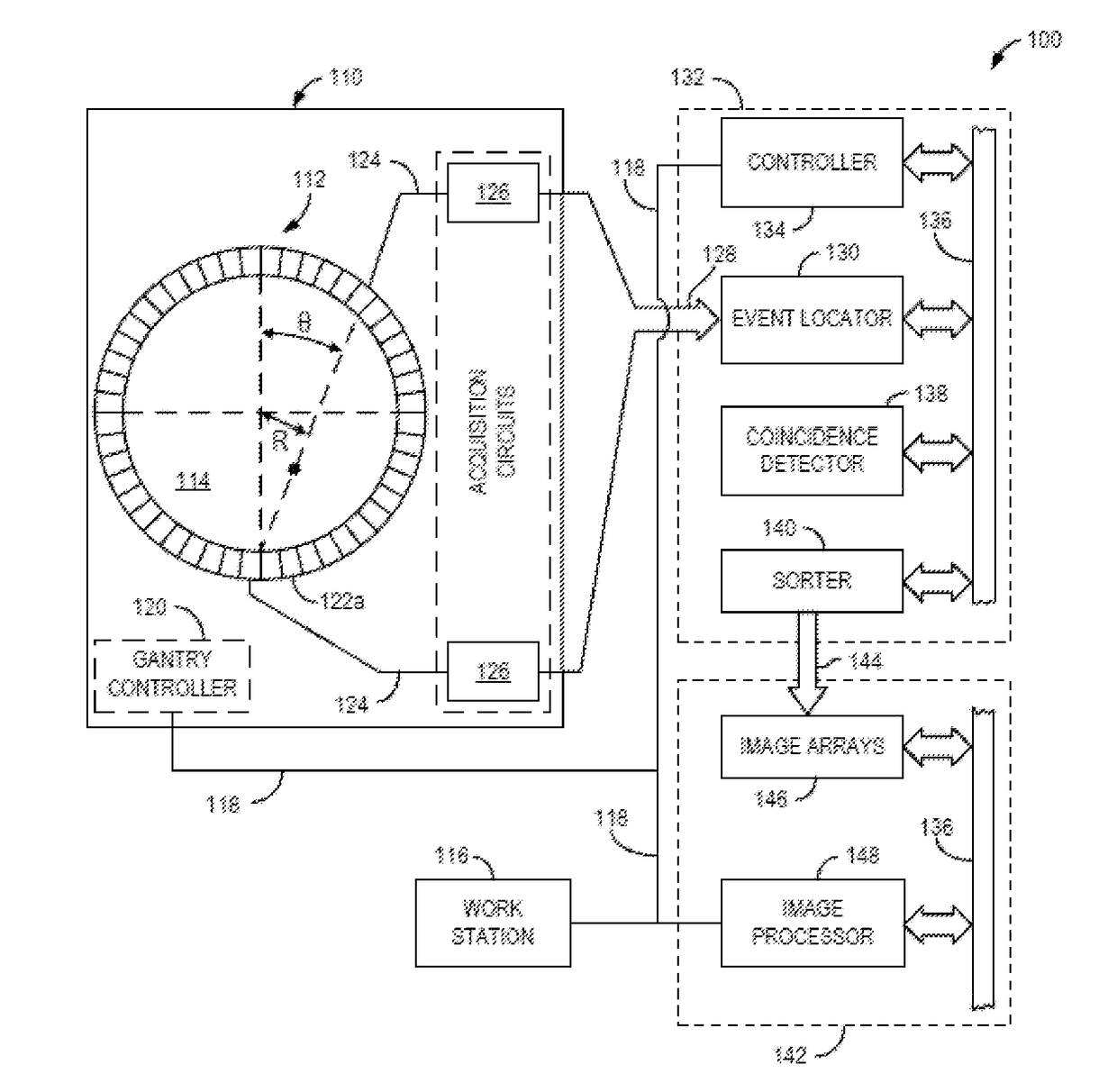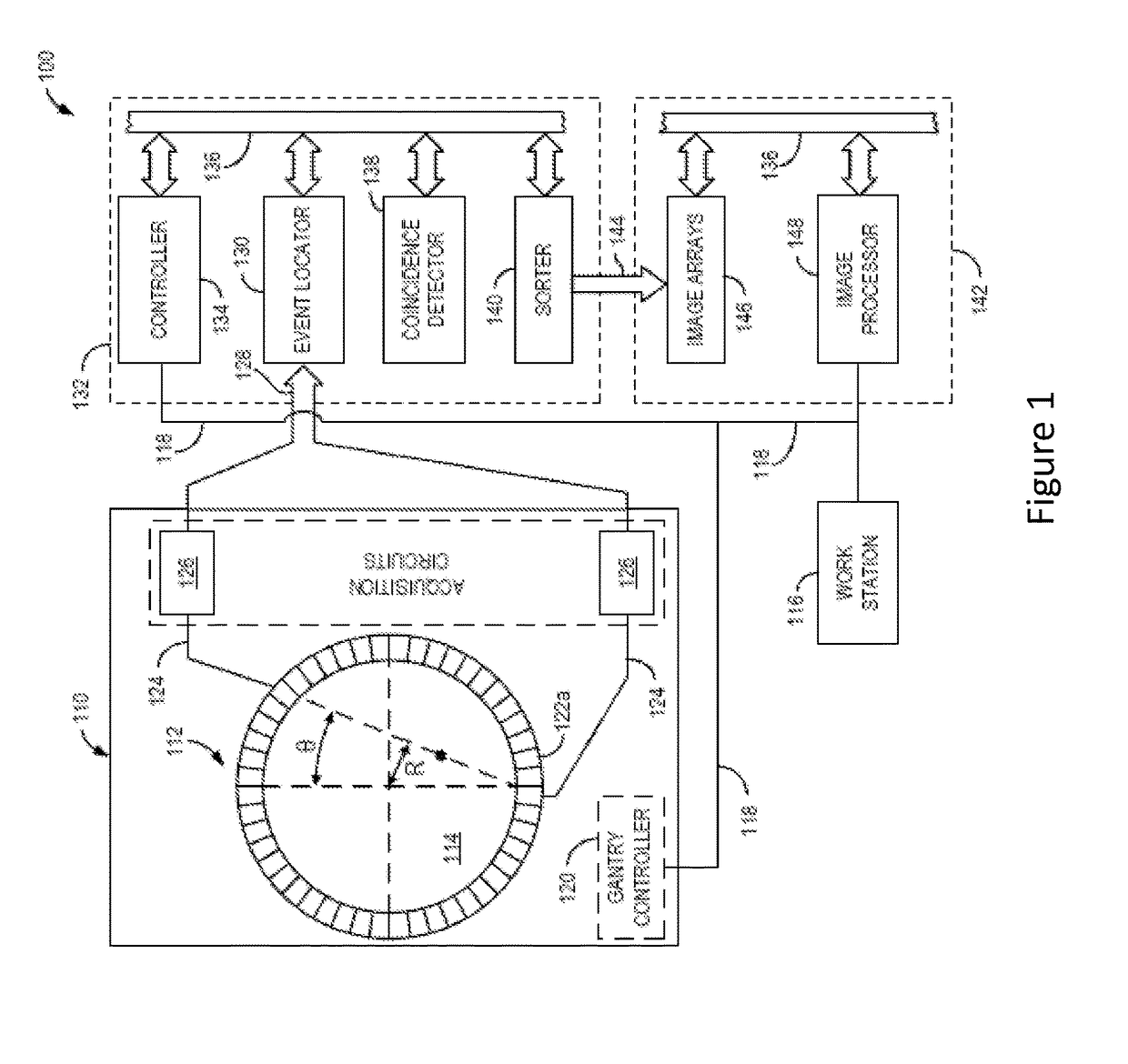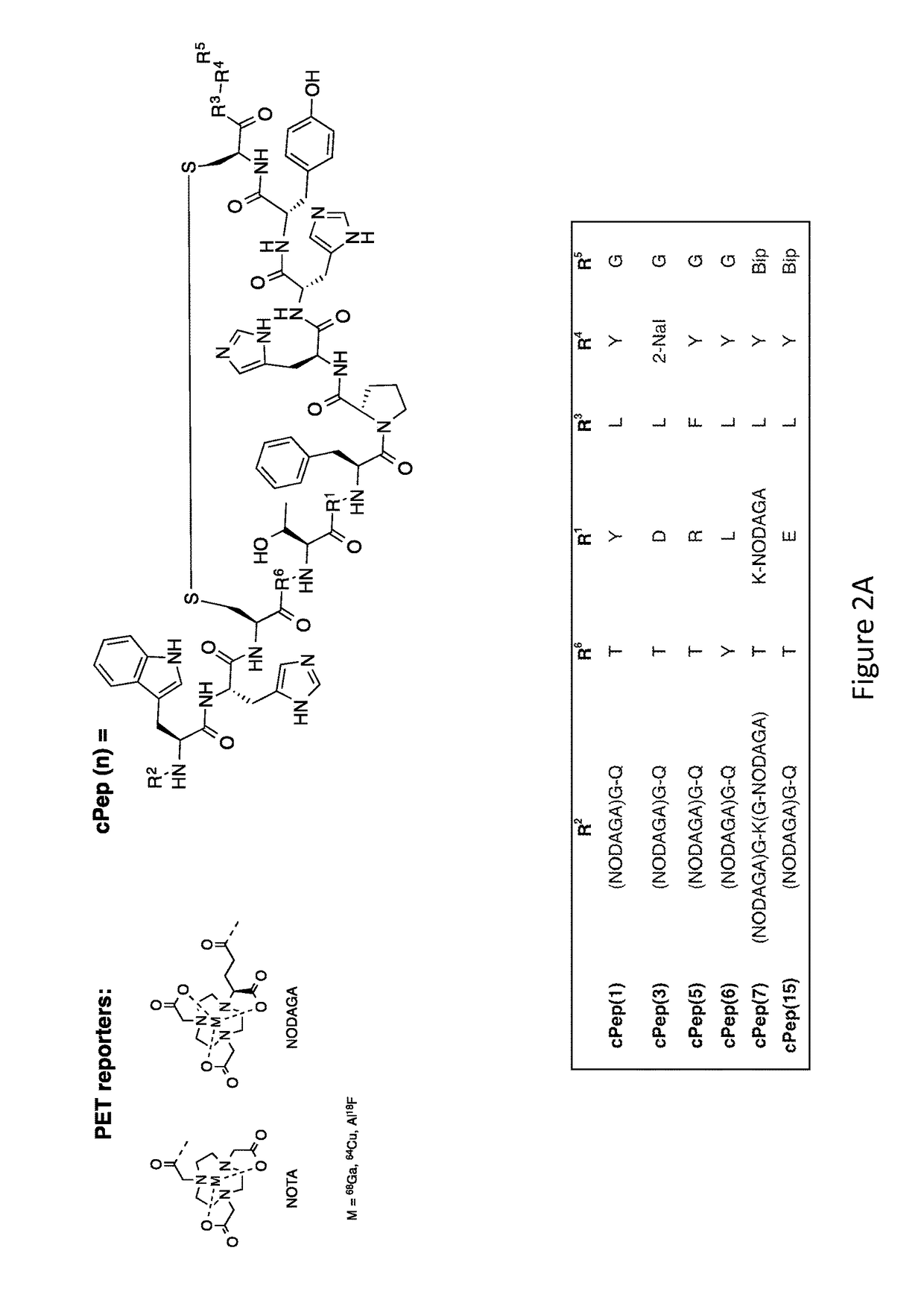Collagen Targeted Imaging Probes
- Summary
- Abstract
- Description
- Claims
- Application Information
AI Technical Summary
Benefits of technology
Problems solved by technology
Method used
Image
Examples
example 1
Synthesis of 64Cu-CBP1
[0264]Pep(1).
[0265]The CPB1 peptide (see FIG. 2A) was prepared on resin and synthesized by standard Fmoc chemistry using solid-phase peptide synthesis on a OEM microwave peptide synthesizer (Matthews, N.C.) on a 0.1 mmol scale using microwave assisted solid phase synthesis using Rink amide MBHA resin (EMD Millipore), FMOC protected amino acids (Novabiochem) and 2-(1H-benzotriazole-1-yl)-1,1,3,3-tetramethyl-uronium hexafluorophosphate (HBTU) coupling chemistry. Side chain protections of the amino acids used were the following: glutamine, cysteine, histidine: trityl; arginine: 2,2,4,6,7-pentamethyldihydro-benzofuran-5-sulfonyl; aspartic acid: tert-butyl; lysine, tryptophane: tert-butoxycarbonyl; and threonine: tert-butyl. The protected amino acids were dissolved in dimethylformamide (DMF), (0.2 M) the activator HBTU solution was prepared in DMF (0.45 M) and the activator base, diisopropylethylamine (DIPEA), was prepared in N-Methylpyridinone NMP (2M). The deprote...
example 2
Synthesis of 64Cu-CBP3
[0274]Pep(3).
[0275]The CPB3 peptide (see FIG. 2A) was prepared using the same conditions as in Example 1. Pep(3): Molecular weight for C98H124N26O23S2, MS(ESI) calc: 1050.2 [(M+2H) / 2]2+; found: 1050.5.
[0276]cPep(3).
[0277]The linear Pep(3) peptide, about 30 mg, was cyclized and purified using the same conditions as in Example 1, (yield>90%, purity 99%). cPep(3): Molecular weight for C98H122N26O23S2, MS(ESI) calc: 1049.2 [(M+2H) / 2]2+; found: 1049.2.
[0278](tBu)NODAGA-Pep(3).
[0279](tBu)NODAGA-NHS was conjugated to the N-terminus of cPep(3) using the same conditions as in Example 1. The product eluted from the column at approximately 33-36% B. (tBu)NODAGA-cPep(3): Molecular weight for C125H169N29O30S2. MS(ESI): calc: 1312.0 [(M+2H] / 2]2+; found: 1311.3.
[0280]NODAGA-Pep(3).
[0281](tBu)NODAGA-Pep(3) was deprotected using the same conditions as in Example 1. NODAGA-cPep(3): Molecular weight for C113H145N29O30S2. MS(ESI): calc: 1227.9 [(M+2H] / 2]2+; found: 1227.1. 64Cu-CBP...
example 3
Synthesis of 64Cu-CBP5
[0282]Pep(5).
[0283]The CPB5 peptide (see FIG. 2A) was prepared using the same conditions as in Example 1. Pep(5): Molecular weight for C99H127N29O22S2, MS(ESI) calc: 1070.7 [(M+2H) / 2]2+; found: 1070.2.
[0284]cPep(5).
[0285]The linear Pep(5) peptide, about 30 mg, was cyclized and purified using the same conditions as in Example 1, (yield>90%, purity 99%). cPep(5): Molecular weight for C99H125N29O22S2, MS(ESI) calc: 1069.7 [(M+2H) / 2]2+; found: 1069.6.
[0286](tBu)NODAGA-Pep(5).
[0287](tBu)NODAGA-NHS was conjugated to the N-terminus of cPep(5) using the same conditions as in Example 1. The product eluted from the column at approximately 33-36% B. (tBu)NODAGA-cPep(5): Molecular weight for C126H172N32O29S2. MS(ESI): calc: 1332.5 [(M+2H] / 2]2+; found: 1331.7.
[0288](tBu)NODAGA-Pep(5).
[0289](tBu)NODAGA-Pep(5) was deprotected using the same conditions as in Example 1. NODAGA-cPep(5): Molecular weight for C114H148N32O29S2. MS(ESI): calc: 1248.4 [(M+2H] / 2]2+; found: 1247.5.
[029...
PUM
| Property | Measurement | Unit |
|---|---|---|
| Structure | aaaaa | aaaaa |
Abstract
Description
Claims
Application Information
 Login to View More
Login to View More - R&D
- Intellectual Property
- Life Sciences
- Materials
- Tech Scout
- Unparalleled Data Quality
- Higher Quality Content
- 60% Fewer Hallucinations
Browse by: Latest US Patents, China's latest patents, Technical Efficacy Thesaurus, Application Domain, Technology Topic, Popular Technical Reports.
© 2025 PatSnap. All rights reserved.Legal|Privacy policy|Modern Slavery Act Transparency Statement|Sitemap|About US| Contact US: help@patsnap.com



